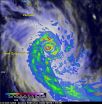(Press-News.org) CORVALLIS, Ore. - A new study from Oregon State University suggests there is a relationship between low levels of vitamin D and depression in otherwise healthy young women.
OSU researchers found that young women with lower levels of vitamin D were more likely to have clinically significant depressive symptoms over the course of a five-week study, lead author David Kerr said. The results were consistent even when researchers took into account other possible explanations, such as time of year, exercise and time spent outside.
"Depression has multiple, powerful causes and if vitamin D is part of the picture, it is just a small part," said Kerr, an associate professor in the School of Psychological Science at OSU. "But given how many people are affected by depression, any little inroad we can find could have an important impact on public health."
The findings were published recently in the journal Psychiatry Research. Co-authors are Sarina Saturn of the School of Psychological Science; Balz Frei and Adrian Gombart of OSU's Linus Pauling Institute; David Zava of ZRT Laboratory and Walter Piper, a former OSU student now at New York University.
Vitamin D is an essential nutrient for bone health and muscle function. Deficiency has been associated with impaired immune function, some forms of cancer and cardiovascular disease, said Gombart, an associate professor of biochemistry and biophysics, principal investigator with the Linus Pauling Institute and international expert on vitamin D and the immune response.
People create their own vitamin D when their skin is exposed to sunlight. When sun is scarce in the winter, people can take a supplement, but vitamin D also is found in some foods, including milk that is fortified with it, Gombart said. The recommended daily allowance of vitamin D is 600 IU per day. There is no established level of vitamin D sufficiency for mental health.
The new study was prompted in part because there is a widely held belief that vitamin D and depression are connected, but there is not actually much scientific research out there to support the belief, Kerr said.
"I think people hear that vitamin D and depression can change with the seasons, so it is natural for them to assume the two are connected," he said.
According to Kerr and his colleagues, a lot of past research has actually found no association between the two, but much of that research has been based on much older adults or special medical populations.
Kerr's study focused on young women in the Pacific Northwest because they are at risk of both depression and vitamin D insufficiency. Past research found that 25 percent of American women experience clinical depression at some point in their lives, compared to 16 percent of men, for example.
OSU researchers recruited 185 college students, all women ages 18-25, to participate in the study at different times during the school year. Vitamin D levels were measured from blood samples and participants completed a depression symptom survey each week for five weeks.
Many women in the study had vitamin D levels considered insufficient for good health, and the rates were much higher among women of color, with 61 percent of women of color recording insufficient levels, compared to 35 percent of other women. In addition, more than a third of the participants reported clinically significant depressive symptoms each week over the course of the study.
"It may surprise people that so many apparently healthy young women are experiencing these health risks," Kerr said.
As expected, the women's vitamin D levels depended on the time of year, with levels dropping during the fall, at their lowest in winter, and rising in the spring. Depression did not show as a clear pattern, prompting Kerr to conclude that links between vitamin D deficiency and seasonal depression should be studied in larger groups of at-risk individuals.
Researchers say the study does not conclusively show that low vitamin D levels cause depression. A clinical trial examining whether vitamin D supplements might help prevent or relieve depression is the logical next step to understanding the link between the two, Kerr said.
OSU researchers already have begun a follow-up study on vitamin D deficiency in women of color. In the meantime, researchers encourage those at risk of vitamin D deficiency to speak with their doctor about taking a supplement.
"Vitamin D supplements are inexpensive and readily available." Kerr said. "They certainly shouldn't be considered as alternatives to the treatments known to be effective for depression, but they are good for overall health."
INFORMATION:
The research was supported by grants from the Good Samaritan Hospital Foundation's John C. Erkkila Endowment for Health and Human Performance and the National Institute of Environmental Health Sciences.
Interviewing women at a breast-imaging center in an urban safety net institution before and after they used a "mHealth" mobile health app on a tablet, Elissa Ozanne, PhD from Dartmouth's Norris Cotton Cancer Center and colleagues concluded that older, diverse, and low income women found it easy to use and acceptable. Published in the Journal of Health Disparities Research Practices, the paper with these findings is "Can mHealth Improve Risk Assessment in Underserved Populations? Acceptability of a Breast Health Questionnaire App in Ethnically Diverse, Older, Low-Income ...
Biochemists at the Ruhr-Universität Bochum have gained new insights into the generation and maintenance of circadian rhythms. They demonstrated that the Ras protein is important for setting the phase of such a circadian clock, as its activity determines the period length of the rhythm. Ras is also contributing to induce phase-shifts in circadian rhythms in response to external time cues such as light. The team headed by Prof Dr Rolf Heumann published their results in the magazine "Molecular Neurobiology".
Ras activity varies throughout the day
The circadian clock ...
Absence, it seems, really does make the heart grow fonder.
That's according to research conducted by UC Santa Barbara anthropologists, who found that levels of the "love" hormone oxytocin increases among Tsimane men when they come home to their families after a day of hunting. The researchers also found that the increase in oxytocin was greater for those men who were absent longer, and it positively correlated with changes in testosterone. Their findings are published in the Royal Society journal Biology Letters.
The Tsimane are an indigenous population of forager-farmers ...
For many, Facebook connects friends, family, and others with common interests. Despite the popularity of social networking sites like Facebook, scientists are only beginning to learn how they affect human interaction.
In a recent study published by the journal Social Science & Medicine, Dartmouth researchers examined nearly 9,000 Facebook conversations to better understand how people seek and receive support on social networking sites.
"Among the many Facebook conversations that were mostly casual, we noticed more serious exchanges among people who mentioned a major ...
As one of the strongest cyclones every recorded in the South Pacific Ocean, Cyclone Pam devastated the island archipelago of Vanuatu. The Global Precipitation Measurement or GPM core observatory provided data on rain rates throughout the storm. At the end of Pam's life on March 17, NASA's RapidScat provided a look at the winds of the waning storm.
As the cyclone bore down on Vanuatu's central islands on the afternoon (local time) of March 13, 2015, Pam's maximum sustained winds were estimated to have increased to 270 kph (~167 mph) by the U.S. Joint Typhoon Warning Center ...
New research shows that courtship rituals evolve very fast in cichlid fish in Lake Malawi. Whenever species evolve to feed at different depths, their courtship evolves as well. In the shallows where the light is good, males build sand castles to attract females. Males of deep-dwelling species dig less elaborate pits and compensate with longer swimming displays. The results are published in the open-access journal Frontiers in Ecology and Evolution.
"Lake Malawi cichlids are famous for the diversity and fast evolution of their feeding habits, body form, and sex determination ...
Men and women who adapt their daily diet to meet current UK dietary guidelines could reduce their risk of a heart attack or a stroke by up to a third, according to a new study by King's College London.
The study, published in the American Journal of Clinical Nutrition, recruited healthy middle-aged and older men and women to compare the effects on risk factors for cardiovascular disease (CVD) of following a diet based on UK health guidelines compared with a traditional British diet. The predicted risk of CVD over the next 10 years for the participants was estimated to ...
In diseases such as asthma and chronic obstructive pulmonary disease (COPD), the body produces too much mucus, making breathing difficult. New research from Washington University School of Medicine in St. Louis provides clues to potentially counteract inappropriate mucus production.
"The new study lays the groundwork for developing treatments for diseases such as asthma, COPD, cystic fibrosis and even certain cancers," said senior author Thomas J. Brett, PhD, assistant professor of medicine. "It also solves a 20-year mystery about the role of a protein that has long been ...
Researchers at the San Diego Supercomputer Center (SDSC) and the Moores Cancer Center at the University of California, San Diego, have described for the first time the molecular mechanism of cancer development caused by well-known "resistance" mutations in the gene called epidermal growth factor receptor (EGFR).
While these mutations were known for quite a long time, the question as to why they cause cancer or make some drugs ineffective was still not answered.
The study, called "Molecular Determinants of Drug-Specific Sensitivity for Epidermal Growth Factor Receptor ...
Tropical Cyclone Bavi weakened to a depression and NASA's RapidScat instrument measured its waning winds from space.
On March 17 the RapidScat instrument aboard the International Space Station (ISS) measured Bavi's surface winds from 01:28 to 3:01 UTC. RapidScat data showed surface winds were strongest winds in the northwestern quadrant. Sustained winds were near 17 m/s (38 mph/61 kph) and weaker around the rest of the storm.
On March 18 at 0000 UTC (March 17 at 8 p.m. EDT), the Joint Typhoon Warning Center noted that Bavi's maximum sustained winds dropped to 25 knots ...



